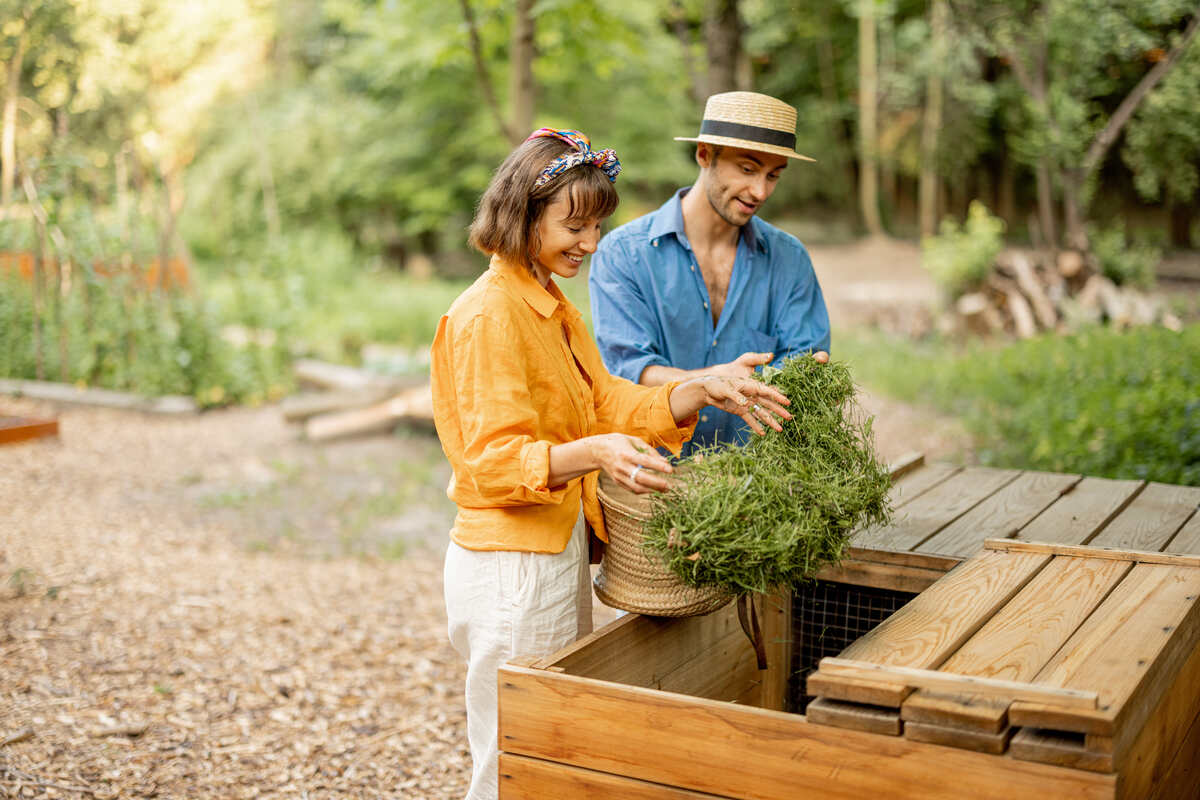
Want to help save the planet? Learn how to compost grass clippings through grasscycling, mulching, or pile composting, turning waste into a superfood for your lawn and plants, all while helping the environment.
Composting grass isn’t just about being eco-friendly; it’s also a smart way to enrich your garden. These methods break down clippings into nutrient-rich fertilizer, boosting your soil’s health and helping your greenery thrive. Plus, you’re also cutting down on landfill waste, making composting a win-win for everyone.
What Is Composting?
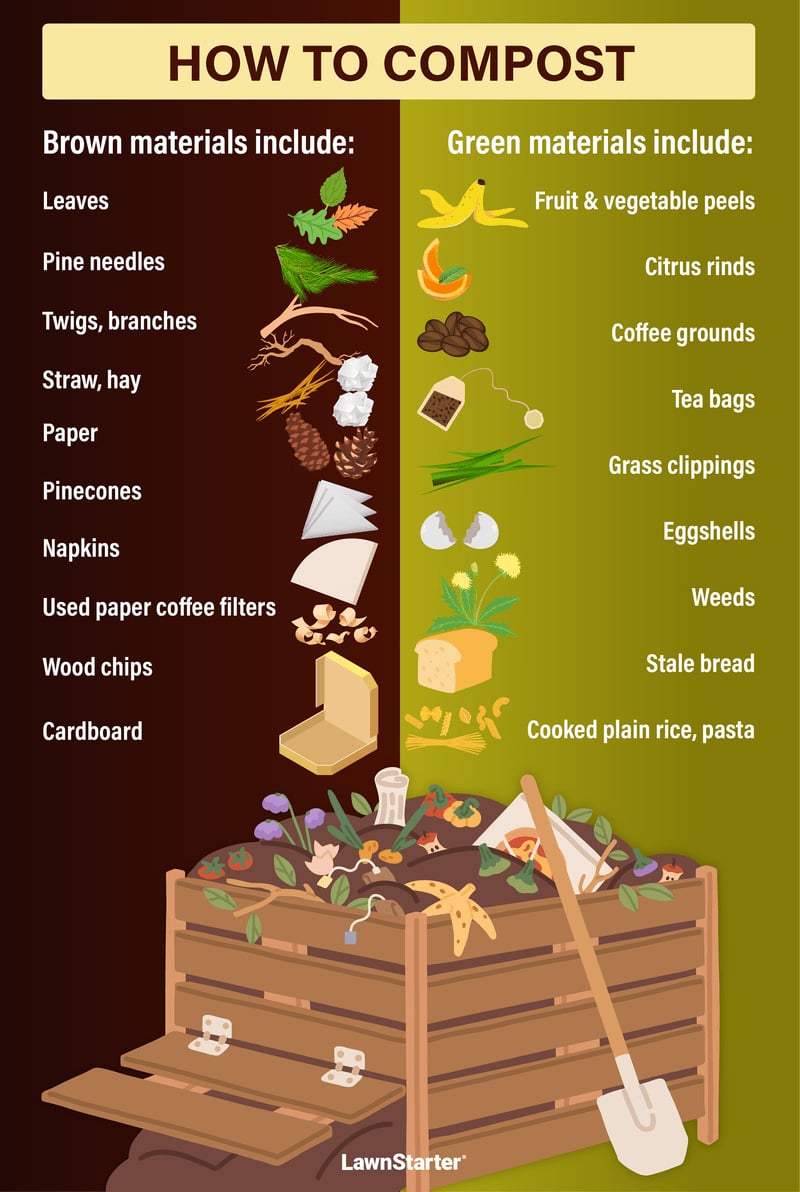
Composting is essentially nature’s process of recycling decomposed organic materials into a rich soil known as compost. It’s an incredible method to transform your kitchen scraps and yard waste into nutrient-packed food for your garden. The EPA reports that the generation of yard trimmings in MSW (municipal solid waste) was 35.4 million tons. That’s a lot of potential waste that, through composting, can be turned into something beneficial for the earth.
This eco-friendly process not only reduces the amount of trash in landfills but also plays a significant role in combating climate change and enhancing soil health. By composting, we can take a direct, impactful step towards a more sustainable and healthy planet. If you’re interested in starting your composting journey, you can check your state’s compost regulations through the US Composting Council’s website.
How to Use Grass Clippings for Composting
Turning your grass clippings into compost can be done in several cool ways. Whether you’re a fan of the set-it-and-forget-it method or you like to get hands-on, there’s a method just for you. Let’s dive into four popular ways to compost grass clippings:
1. Grasscycling
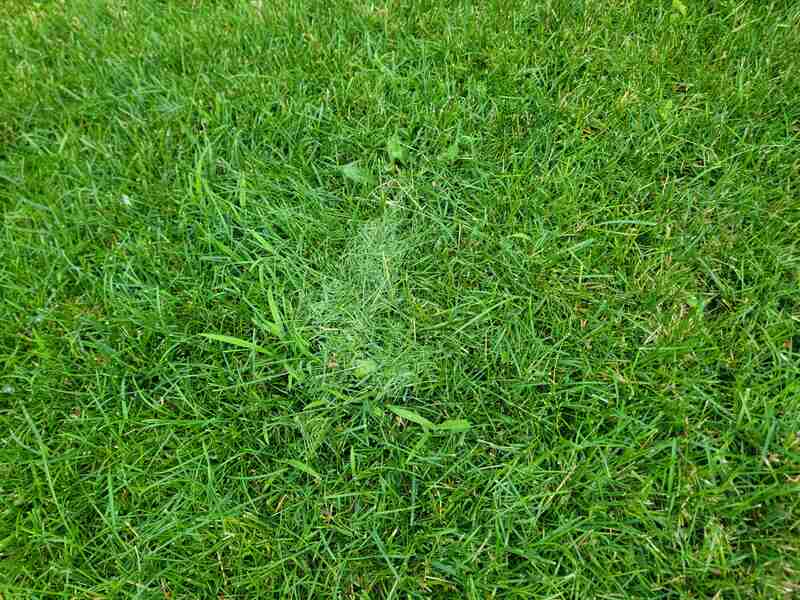
Grasscycling is the simplest way to compost grass clippings directly on your lawn. When you mow, the clippings are left on the ground, where they quickly decompose, returning valuable nutrients back to the soil. This method is incredibly efficient, as it requires no extra effort beyond regular lawn mowing.
Grasscycling not only enriches your lawn, providing 25% of its fertilizer needs, but also saves significant time. A study revealed that although it may require an extra mow monthly, homeowners saved an average of 35 minutes per mow, reducing overall yard work by 7 hours over 6 months.
To dive deeper into how grasscycling can benefit your lawn and save you time, check out our detailed article: “What is Grasscycling?”
How to Grasscycle
- Mow your lawn regularly to avoid long lawn clippings.
- Use a mulching mower with sharp mower blades for best results.
- Leave the clippings on the lawn to decompose naturally.
Pros and Cons of Grasscycling
- Pros: Super easy; no extra equipment needed; feeds your lawn.
- Cons: Not suitable for long grass; can look untidy if overdone.
2. Mulching
Mulching involves finely chopping grass clippings and other organic matter, then spreading a thin layer onto plants or garden beds. This method creates a protective layer that retains soil moisture, suppresses weeds, and gradually adds nutrients back into the soil as the material decomposes.
However, if your lawn is infested with weeds like dandelions, it’s best not to mulch, as this can spread the weeds further. It’s better to get rid of dandelions first by pulling them out from the root. Additionally, avoid mulching if the grass is too long, wet, or diseased, as this can lead to issues like mold growth or the spread of disease within your garden beds.
For more tips on using mulch to enhance your lawn’s health and appearance, check out our article: How to Improve Your Lawn With Mulch.
How to Mulch with Grass Clippings
- Use a mulching mower for finer clippings.
- Distribute the clippings evenly over your garden beds.
- Ensure the layer is not too thick to prevent matting.
Pros and Cons of Mulching
- Pros: Enhances soil health; reduces the need for water and fertilizers; suppresses weed growth.
- Cons: Requires access to a mulching mower; can form mats if applied too thickly. May spread disease or weed seeds to garden beds.
3. Pile Composting
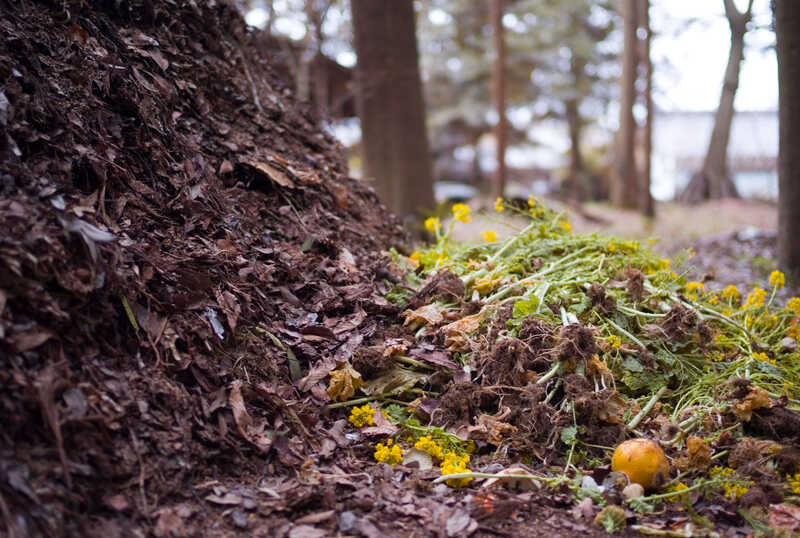
Pile composting is a simple way to turn grass clippings and other natural leftovers from your yard and kitchen into something amazing for your garden. You just pile them up and let them break down over time. This process turns them into rich compost that’s great for helping your plants grow.
To make good compost, you need to mix green materials, like grass clippings or vegetable scraps (which are full of nitrogen), with brown materials, like wood chips or paper (which have lots of carbon). It takes a little work to keep everything balanced, but the payoff is a super-nutritious compost that your garden will love.
How to Start Pile Composting with Grass Clippings
- Choose the perfect spot in your yard for building your compost pile, ideally in a place that’s sheltered from direct sunlight, heavy rain, and strong winds.
- Start with a 6-inch layer of bulky stuff like wood chips at the bottom. This helps air get through. Then sprinkle water over the pile to dampen it.
- Start layering your compost by adding a 6-inch layer of brown material, then add 2 to 3 inches of green. You can choose to alternate each layer for a sandwich-style method or mix them up together.
- Keep the pile moist and turn it regularly to aerate.
For a detailed guide on how to embark on your pile composting quest, check out our guide: “Composting 101: How to Start Composting.”
Pros and Cons of Pile Composting
- Pros: Creates rich compost for various garden uses; recycles many types of organic wastes.
- Cons: Requires space; attracts pests and wildlife; more labor-intensive to maintain.
4. Composting Bins
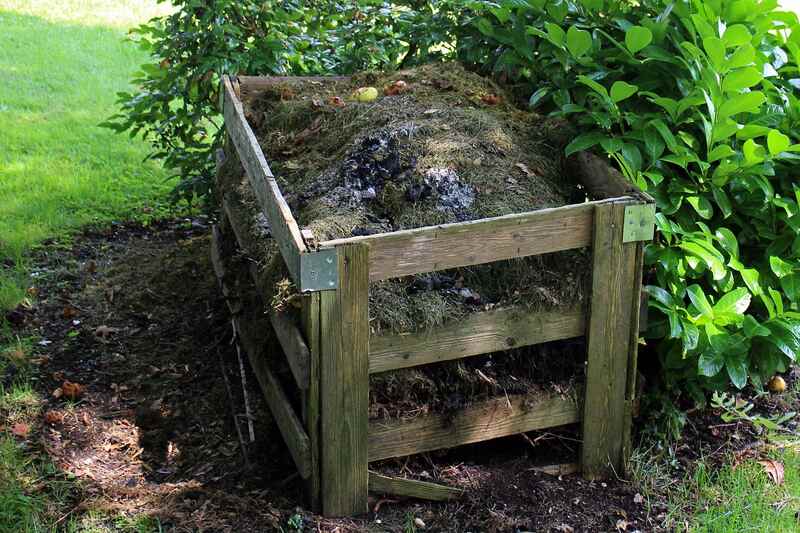
Composting bins are like special boxes that help you turn your kitchen scraps and yard waste into compost without making a mess. They come in all sorts of sizes and styles, from easy-to-use buckets to sophisticated tumblers. They’re perfect if you don’t have a lot of room or just want to keep things tidy.
When you use a bin for composting, it works faster because it keeps everything warm and moist, creating an ideal environment for decomposing organic matter. Plus, it’s a cleaner way to compost since it keeps away critters and cuts down on smells that you might get with a regular compost pile.
If you’re looking for the perfect compost bin for your home, check out our list of the best compost bins.
How to Use Composting Bins
- Select a bin that fits your space and needs.
- Alternate between green and brown materials.
- Keep the contents moist and turn them regularly to aerate.
Pros and Cons of Composting Bins
- Pros: More controlled environment; reduces pests and odors; suitable for small spaces.
- Cons: Needs initial investment; requires regular maintenance.
Why Compost Grass Clippings
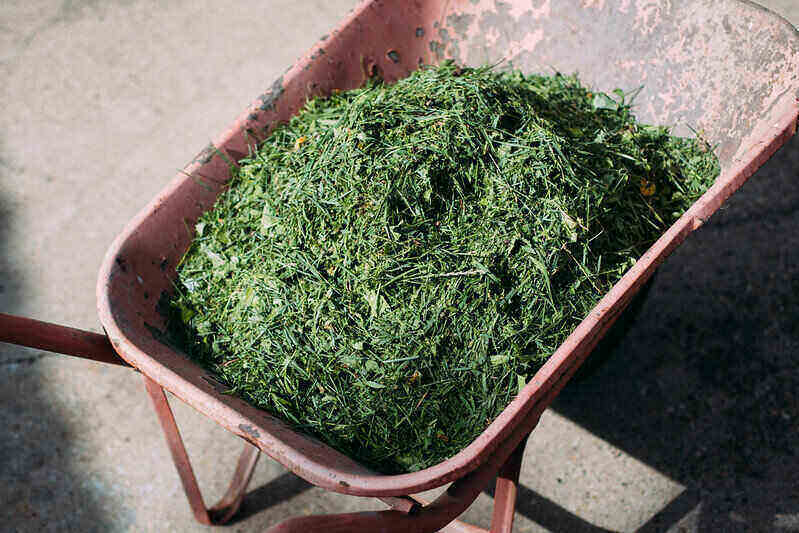
Think of grass clippings as gold for your garden, not just green waste. When we toss them into the trash, they end up in landfills, taking up space and contributing to methane emissions—a potent greenhouse gas. But when you compost them, you’re doing something magical: turning what could be waste into something useful—an organic fertilizer.
In fact, composting can significantly reduce the amount of waste sent to landfills. For instance, in 2018, the United States Environmental Protection Agency noted that leaves and grass made up about 12.1% of total waste. Thus, if you compost all of your yard trimmings, you can make a big dent in the amount of trash we create.
Here’s why composting grass clippings is game-changer for gardeners and the Earth alike:
- Reduces Waste: Composting grass clippings instead of throwing them away can significantly decrease the amount of waste ending up in landfills.
- Saves Money: You’ll save on fertilizer costs because compost provides a rich, natural fertilizer that helps your plants grow.
- Improves Soil Health: Compost adds essential nutrients back into the soil, improving its structure, aeration, and its ability to retain water.
- Supports Plant Growth: The nutrients in compost support healthy plant growth, leading to more vibrant gardens and lawns.
- Eco-Friendly: Composting is a natural recycling process, reducing greenhouse gas emissions from landfills and cutting down on the need for chemical fertilizers.
- Encourages a Balanced Ecosystem: Composting supports a healthy ecosystem in your garden, encouraging beneficial bacteria and fungi that help plants grow.
- It Returns Nutrients to the Environment: Composting recycles nutrients back to the soil, such as nitrogen, phosphorus, and potassium. Throwing clippings away actually takes nutrients out of your yard, so it’s best to keep them in your garden or lawn.
By composting your grass clippings, you’re not just taking care of your garden; you’re taking a small but powerful step towards a healthier planet.
FAQ About Composting Grass Clippings
What’s the best ratio of grass clippings to other materials in my compost?
You should aim for a mix that has about 30 parts of carbon-rich materials (like leaves or shredded paper) for every part of nitrogen-rich materials (like grass clippings). This 30:1 ratio is perfect because it helps your compost break down just right.
If you have too much nitrogen, it can turn into a smelly gas. Not enough nitrogen, and your compost won’t heat up enough, making everything break down super slowly.
How often should I turn my compost pile with grass clippings in it?
Aim to turn your compost pile every 2 to 4 weeks. This introduces oxygen, which is crucial for composting, and helps prevent any unpleasant odors by mixing the materials well.
How can I keep my compost from smelling bad?
To keep your compost from smelling, balance green and brown materials, turn it regularly, and ensure it’s moist but not wet. A well-aerated, balanced compost pile decomposes without emitting bad odors.
Simplify Your Lawn Care With Expert Help
Among all the composting options discussed, grasscycling stands out as the most efficient and effortless method to compost your grass clippings. By choosing this approach, you can ensure your lawn remains healthy without the hassle.
To make grasscycling even more hassle-free, consider hiring a lawn care pro. They can mow your lawn and leave the grass clippings directly on it to decompose. This way, you won’t have to lift a finger to achieve a vibrant lawn.
Main Photo Credit: rh2010 / Adobe Stock